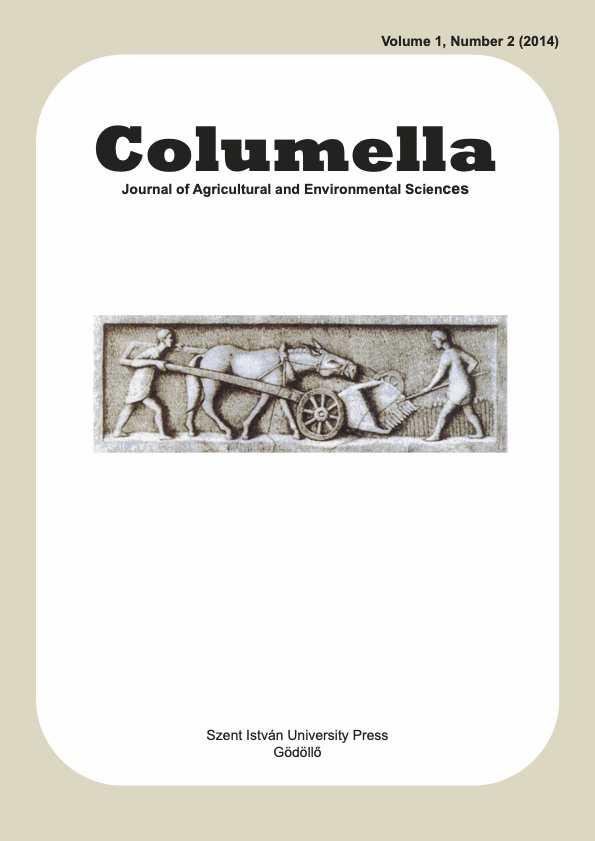The effect of genotype and cropyear on the yield and the phytopathological traits of sunflower (Helianthus annus L.)
DOI:
https://doi.org/10.18380/SZIE.COLUM.2014.1.2.101Keywords:
fungicide treatment, genotype, phytopathological traits, sunflower, yieldAbstract
The yield and the phytopathological traits of seven sunflower hybrids were studied in two crop protection models with different input levels (extensive=without fungicide treatments, mid-tech=-two fungicide treatments) on chernozem soil in two different years (2012 and 2013). The experimental results proved that the level of infection by Diaporthe (64% in the extensive model, 38% in the mid-tech model as an average of the hybrids), Phoma (53.5% and 34.0%), Sclerotinia (8.4% and 4.6%), Alternaria (76.4% and 48.7%) in the more wet year of 2012. When the precipitation before the season (294 mm from December until March) had filled up the water stock of the chernozem soil and the vegetation period had been dry (79 mm rain during the months of June, July and August), the degree of infection was considerably lower (infection by Diaporthe: 37% in the extensive model and 25% in the mid-tech model, infection by Phoma: 28.5% and 17.4%, infection by Sclerotinia: 1.5% and 0.7%, infection by Alternaria: 35.8% and 22.2% in 2013 as an average of the hybrids). Due to the higher disease infection in 2012, the yield of the hybrids ranged between 3300 – 4200 kg ha-1 and between 3900 – 4900 kg ha-1 in the extensive (control) model and mid-tech model (two fungicide treatments), respectively. In the more favourable year of 2013 (as regards the weather and the disease infection), the yields of the hybrids varied between 4200 – 5200 kg ha-1 in the extensive and between 5000 – 6000 kg ha-1 in the mid-tech crop protection model.
Downloads
Published
Issue
Section
License
Copyright (c) 2014 Péter Pepó, Adrienn Novák

This work is licensed under a Creative Commons Attribution-NonCommercial-NoDerivatives 4.0 International License.






